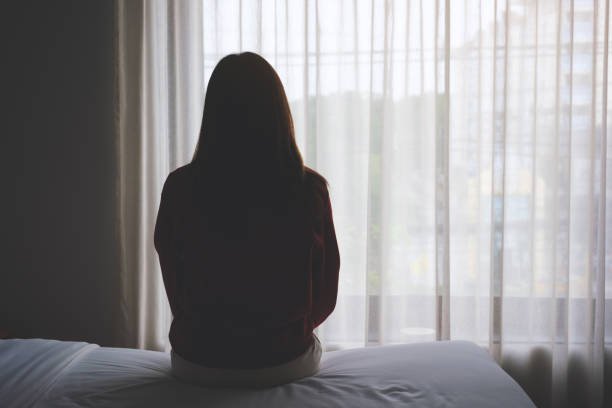Psychedelics are re-emerging as a bold frontier in mental health treatment. Psilocybin, LSD, ayahuasca, and MDMA have shown promise in clinical trials for treating depression, PTSD, anxiety, and end-of-life distress. But as the light grows brighter around these compounds’ healing potential, the shadows they cast demand deeper scrutiny. While many users report transformation, insight, and emotional relief, a growing body of evidence shows that for some, the journey does not end when the drug wears off. Instead, it leads into a long and sometimes harrowing psychological afterglow filled with uncertainty, disorientation, and inner struggle.
A new study published in the Journal of Psychedelic Studies takes a significant step toward mapping this underexplored terrain. Led by psychologist Oliver C. Robinson of the University of Greenwich, the research offers one of the most comprehensive analyses yet of post-psychedelic difficulties—the psychological challenges that outlast the chemical high and can persist for weeks, months, or even years.
The Hidden Cost of Insight
When people talk about the psychedelic renaissance, they tend to focus on its upsides: the mystical experiences, the emotional breakthroughs, the dissolving of ego, and the newfound appreciation for life. But this celebratory narrative can obscure the less glamorous side of these powerful substances. According to past surveys, anywhere from 5% to 25% of users report psychological difficulties after psychedelic use. These include anxiety, confusion, depression, social withdrawal, paranoia, and what’s often described as existential distress—a deep, unsettling sense that reality has shifted in some unfathomable way.
The new study digs deeper into these experiences. Conducted through an online survey of 159 adults, all of whom had struggled with lasting psychological issues after taking a psychedelic, the study spans a population mostly from North America and Europe, many with high levels of education. Participants were asked to describe one particularly impactful experience—often from years prior—that left enduring psychological effects. They then rated the type, severity, and duration of their difficulties and reflected on what coping strategies helped them recover.
The data reveal a sobering truth: for some, the most intense effects of psychedelics don’t arrive during the trip, but long after.
What Haunts the Mind: Types of Psychological Difficulty
Among the most commonly reported problems were social disconnection (72%), anxiety and panic attacks (68%), and existential struggle (65%). Depression affected 61% of participants, while 55% reported derealization—a dissociative state in which the world feels unreal or dreamlike. Less common but still significant were paranoia, cognitive confusion, depersonalization, and persistent visual distortions.
In terms of severity, anxiety and panic attacks were rated as the most disruptive. These states often rendered people unable to perform daily tasks, maintain relationships, or feel safe in their own minds. Paranoia and cognitive confusion also ranked high on the severity scale. In contrast, derealization, depersonalization, and visual distortions—while often alarming—were seen as less impairing to daily functioning.
However, the duration of symptoms told a different story. While anxiety and panic tended to fade over time, existential struggle and diminished self-esteem endured the longest, with both lasting more than 15 months on average. This finding aligns with other research showing that while the acute distress of panic may recede, the deeper identity and meaning-based shifts that psychedelics provoke can linger, unresolved, for years.
The Existential Abyss: Why Some Struggles Stick
Psychedelics are known for dismantling our usual categories of self, time, and meaning. Under their influence, users often feel they’ve glimpsed something profoundly “true” about the nature of existence. But what happens when that insight destabilizes the foundations of one’s psychological identity? For some, the experience opens doors that cannot easily be closed.
Robinson and his team suggest that issues like existential struggle and diminished self-worth may stem from difficulty integrating these expansive, sometimes terrifying realizations. The collapse of ego boundaries, visions of death and rebirth, or the dissolution of a coherent self can leave people emotionally raw, untethered from familiar reference points. Unlike clinical depression, which often comes with a clear neurochemical target for treatment, existential despair is elusive, philosophical, and deeply personal.
One participant described it as “feeling like my sense of reality shattered, and I couldn’t piece it back together in a way that made sense anymore.” Another spoke of being “overwhelmed by the sheer absurdity of existence” for months after an ayahuasca ceremony.
The Role of Trauma and the Mind’s Terrain
Another key insight from the research is that people with prior psychological vulnerabilities—especially trauma—may be more prone to prolonged negative outcomes. Robinson and his team are now exploring how childhood trauma interacts with psychedelic experiences. Do these substances help release and resolve deep-seated emotional pain? Or do they reopen old wounds in unpredictable ways?
The answer may be both. Psychedelics are amplifiers, revealing not just the beauty and mystery of the psyche, but also its unresolved grief, fear, and confusion. For those unprepared or unsupported, this process can be overwhelming.
Healing in the Aftermath: What Helps and What Doesn’t
Crucially, the study also sheds light on what helps people cope. The most commonly cited strategy was self-education—reading books, watching videos, and learning about others’ experiences. This was particularly effective for managing existential struggle, derealization, and visual disturbances. Many participants found comfort in realizing they were not alone, that others had navigated similar terrain and survived.
Professional therapy proved most helpful for depression and diminished self-esteem, underscoring the value of structured psychological support when emotional resilience is low. But interestingly, support from peers and family was rated as more effective than therapy for anxiety and panic attacks. This points to the crucial role of human connection in grounding individuals who feel unmoored after a psychedelic experience.
Robinson was struck by this result. “It surprised me that more people find chatting with peers to be effective than chatting with therapists,” he said. “It may be that therapists are not yet well trained to handle the conundrum of working with psychedelics and associated difficulties.”
Indeed, many therapists are still unfamiliar with how to address integration—the process of making sense of a psychedelic experience and incorporating it into one’s life. Psychedelic integration therapy is a growing but still niche field, and access is limited. As a result, many people turn to online forums, podcasts, and informal communities for support.
No One-Size-Fits-All Recovery
Some difficulties, like sleep disturbances or cognitive confusion, did not show strong preferences for specific coping strategies. This suggests a high degree of individual variability. For one person, journaling might bring clarity. For another, movement or meditation. Still others may need months of silence, solitude, or art to find their way back.
The study’s authors emphasize that recovery is not a one-size-fits-all journey. Different problems demand different tools. This insight could inform the design of future psychedelic therapy programs, encouraging more personalized support systems that include both clinical care and peer-based communities.
Limitations and the Need for Global Perspective
The authors acknowledge that their study has limitations. Because the data were collected retrospectively, participants may have misremembered the duration or intensity of their symptoms. The sample was also skewed toward highly educated individuals in Western countries, which may not capture the full spectrum of global experiences with psychedelics.
“In countries where there is a legal psychedelic culture, such as Brazil or Peru, we would expect very different results,” Robinson noted. In those contexts, the use of ayahuasca or other plant medicines is often embedded in community rituals, spiritual frameworks, and traditional healing practices—factors that can profoundly influence the meaning and outcome of the experience.
Future research, Robinson suggests, should include prospective longitudinal studies that follow individuals before and after psychedelic use. Cross-cultural studies will also be critical to understanding how belief systems, ceremonial contexts, and social support structures shape the risk and resilience surrounding these powerful substances.
Psychedelics as Catalysts—Not Cures
Despite the difficulties described, the researchers found that most participants still viewed their psychedelic experiences positively in the long run. Even among those who struggled for months or years, there was often a sense that the journey had ultimately brought growth, awareness, or healing.
“We find that even among people who have difficulties after psychedelic usage, the vast majority retain a favorable view of psychedelics as agents of positive change,” Robinson said. “This shows that perhaps the difficulties relate to issues that, once made conscious, can be resolved to some degree.”
This perspective mirrors what we often see in extended psychotherapy: the process can be painful, destabilizing, even disorienting—but sometimes this is what healing looks like. Psychedelics are not magic bullets. They are catalysts. What they unearth must still be worked through, lived with, and integrated over time.
A New Frontier in Mental Health Demands Caution and Compassion
As psychedelics inch closer to mainstream psychiatry, we must expand the conversation beyond efficacy to include complexity. Healing is rarely linear. Transformation often comes with turbulence. And while the shimmering peaks of a psychedelic experience can offer breathtaking insight, we must not ignore the valleys that sometimes follow.
The findings of this study underscore the urgent need for better education, preparation, and post-experience support. If we are to harness the potential of these substances responsibly, we must do so with eyes wide open—not just to the light they reveal, but also to the shadows they cast.
The next era of psychedelic science will need to embrace both.






